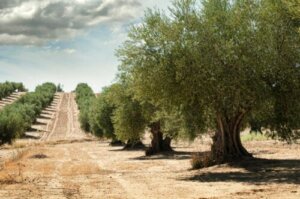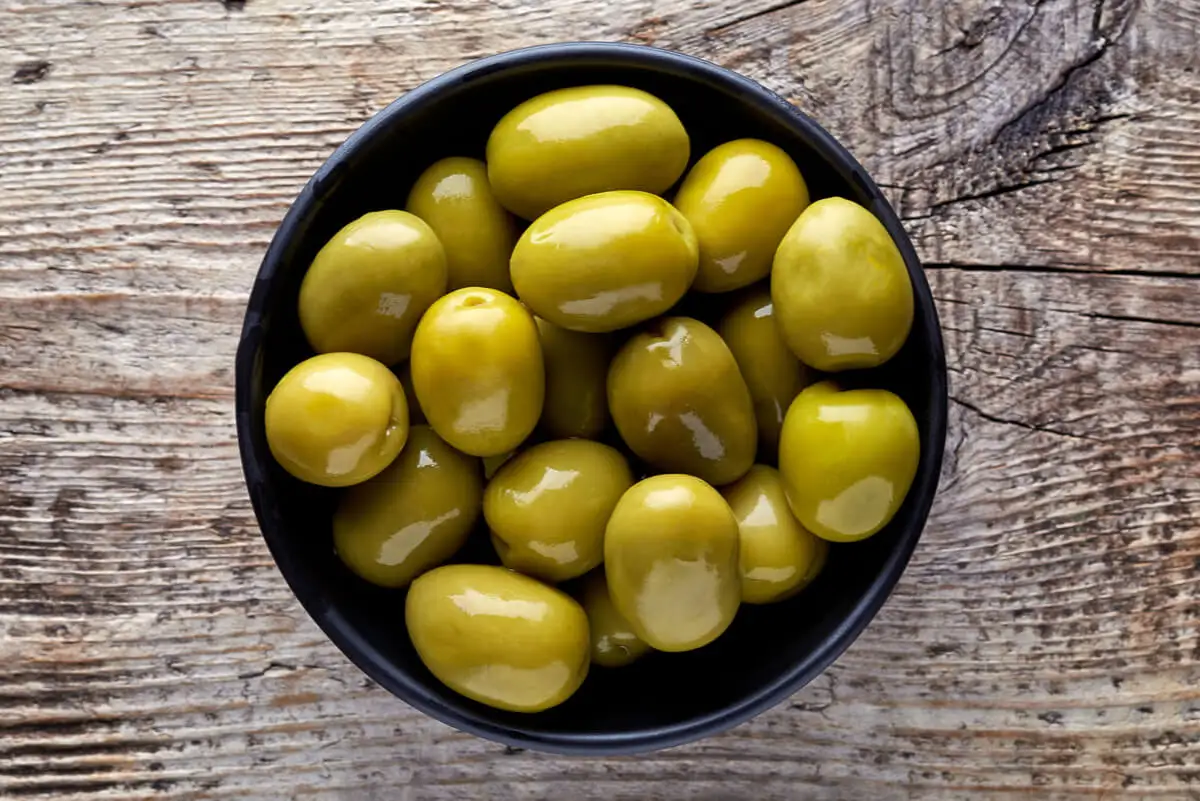11 Types of Olive Trees and Their Characteristics

Most people are aware of the potential of olive oil and also that it’s produced from the fruit of an evergreen tree. However, few know that there’s not just one type of olive tree; in fact, there are more than 100 varieties! In fact, Spain is known to be the country that produces the most types of olive trees, although Italy and Greece are also major producers.
At this point, it’s easy to deduce that olive trees are native to the Mediterranean area. Some can reach 15 meters in height, grow in places with low humidity, and prefer rocky, stony, or clay soils. Let’s take a closer look at the different types of olive trees out there.
1. Picual olive tree
This is one of the olive tree varieties with the most space in Spain; the largest producer is the province of Jaén. This is because it’s the most widely used type of olive tree to produce oil. It’s preferred because it has a higher yield and a better production capacity.
Picual is also known as nevadillo blanco, marteño and lopereño, among other popular names. It has an asymmetrical elliptical shape. When it reaches maturity, the skin turns black. The most relevant characteristic is that it has a high-fat yield.
2. Cornicabra olive tree
This is positioned as the second most cultivated variety in Spain, also due to its high oil yield. The thick, leafy canopy is one of its most notable characteristics.
Despite its late flowering, the cornicabra olive tree is very resistant to low temperatures or dry weather, which makes its production high.
When it reaches maturity, its skin has a wine-red color. This variant is used for both oil production and table olives, also known as cornezuelo olives.
We think you may be interested in reading this, too: Lemon, Olive Oil, and Apple Cider Vinegar: An Ideal Remedy for Kidney Stones
3. Blanqueta olive tree
The largest producer of the blanqueta olive tree is the community of Valencia. It’s also used to produce oil.
Its planting is very resistant to low temperatures, drought, and limestone soil. However, it’s sensitive to what is known as olive tuberculosis or scab.
You can distinguish it because when it reaches maturity, it takes on a wine-red color with whitish-yellow spots. Other popular names are acebuchina blanca, blancaleta and blanca menuda.

4. Olivo verdial de Badajoz
The Badajoz verdial olive tree is also known as zorzaleño, macho or mollar. It’s usually very resistant to drought, and its main use is for green table olives or oil production.
Its ripening is medium, and when it reaches maturity, the skin has a wine-red color. Another of its notorious characteristics is that it is large in size, with an asymmetrical, elongated, and ovoid shape.
5. Manzanilla cacereña olive tree
One of its main characteristics is its bitter taste. It’s believed to be one of the oldest varieties of olive trees.
Its main use is in the production of oil and table olives. Locals also know it as blanca cacereña, negrilla and costaleña. Its skin is black when it reaches maturity.
6. Hojiblanca olive tree
Casta de cabra, casta de Lucena, and lucentino are other names. The name is due to the light color of its leaves. Its main production is black table olives.
Hojiblanca is very resistant to cold and drought. On the other hand, this variant is appreciated for being of very good quality.
7. Picudo olive tree
It’s used both for the production of oil and table olives. Although it used to be favored for olives, nowadays, it’s appreciated for the production of extra virgin olive oil. Basta, paseto and carrasqueño de Lucena are other names for it.
8. Cazorla royal olive tree
This olive tree is very appreciated for its oil. Spain produces it a lot in the province of Jaén.
One of the main attractions of royal olive oil is its aroma. However, a negative point for producers is that it’s usually more laborious to harvest.
Like many olive trees, this one is very resistant to drought. It has a high yield.
9. Granada lechín olive
One of the most appreciated characteristics of the Granada lechín olive tree is its conservation capacity. Therefore, it’s not surprising that it’s widely used as a black olive for table use. However, a large part of the crop is also used for oil production.
It’s not very resistant to rain. It grows best in limestone soils or where there’s a drought.

10. The thrusbird olive
This variant is one of the most oil-rich types of olive trees. If you know the thrush bird, you will be pleased to know that this bird is very fond of this olive tree, and that’s where its name comes from.
Very good quality extra virgin oil is obtained from this type of tree. A characteristic feature is that the olive it produces is usually large in size.
Like this article? You may also like to read: Protect Your Respiratory System with this Oregano and Olive Oil Remedy
11. Morisca olive tree
This type of olive tree survives very well in poor soils or where there is a lot of droughts. Morisca is known to be one of the oldest varieties.
Its oil is highly valued in the market. The province of Badajoz (Spain) is one of the largest producers.
There are more than 100 types of olive trees
Olive oil is known to be one of the best oils for gastronomy lovers. Note that the types of olive trees we have listed are the most produced or demanded in the market, but there are more to discover!
All cited sources were thoroughly reviewed by our team to ensure their quality, reliability, currency, and validity. The bibliography of this article was considered reliable and of academic or scientific accuracy.
- Moreno Vega, A., & López Gálvez, M. (2017). Elaboración de aceites de oliva vírgenes. [Libro electrónico]. Editorial Paraninfo.
This text is provided for informational purposes only and does not replace consultation with a professional. If in doubt, consult your specialist.








